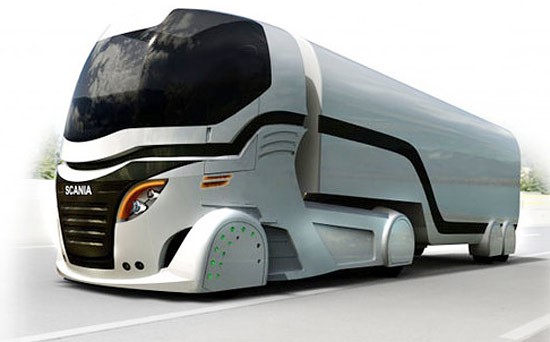 There are several developing factors refining the world of freight transportation as we currently know it. Technology in the form of ELDs is forcing fleet managers to become more scientific in the management of their assets. The apparently insatiable appetite for immediate gratification from the millennials will force carriers to improve speed to market. This will likely put pressure on trucking companies to better integrate their small parcel and LTL operations so local distribution centers can concentrate on meeting on time final mile deliveries. Data engineering will be at the forefront of everything that goes on in supply chains. Data engineering, according to Dr. Michael Watson of Northwestern University, is "the art and science of blending data from multiple sources, automatically cleaning and filtering the data, and transforming the data to be useful for analysis." You may have heard the term "Big Data" referring to the volumes of pertinent data accumulated from various sources along the supply chain. This big data will be the source of information in the data engineering process. Another term you've likely heard is IoT or The Internet of Things. The IoT is the network of physical devices, vehicles, home appliances and other items embedded with advanced electronics capable of exchanging data with a central computer over the internet.
There are several developing factors refining the world of freight transportation as we currently know it. Technology in the form of ELDs is forcing fleet managers to become more scientific in the management of their assets. The apparently insatiable appetite for immediate gratification from the millennials will force carriers to improve speed to market. This will likely put pressure on trucking companies to better integrate their small parcel and LTL operations so local distribution centers can concentrate on meeting on time final mile deliveries. Data engineering will be at the forefront of everything that goes on in supply chains. Data engineering, according to Dr. Michael Watson of Northwestern University, is "the art and science of blending data from multiple sources, automatically cleaning and filtering the data, and transforming the data to be useful for analysis." You may have heard the term "Big Data" referring to the volumes of pertinent data accumulated from various sources along the supply chain. This big data will be the source of information in the data engineering process. Another term you've likely heard is IoT or The Internet of Things. The IoT is the network of physical devices, vehicles, home appliances and other items embedded with advanced electronics capable of exchanging data with a central computer over the internet.
This direct communication capability will create opportunities for more direct integration of the physical world into computer-based systems, resulting in efficiency improvements, economic benefits and reduced human intervention. An easy example of IoT is the appliances in your home. Sensors in your heater and air conditioner will detect when the furnace filter needs to be replaced or the coolant in your AC unit is low. Further, your appliances will exchange that data with whatever maintenance provider it is programmed for. For the do it yourself homeowners, the device can be programmed to order the furnace filter directly and send you a reminder message to replace the filter when it arrives. So, the key component of IoT is the elimination of human intervention ultimately reducing error and processing time resulting in more streamlined and efficient operations.
Equipment Is Evolving as Well
Technology will be the driving force of change in the future of transportation, but the design and usage of physical assets will also undergo a metamorphosis. The ongoing testing of driverless technology will continue and sooner, rather than later, will begin to integrate slowly into the carrier fleet operating mostly on long haul trips on major U.S. thruways. Another interesting development is the Hyperloop. If you haven’t heard of it, essentially the design is a network of tubes through which a magnetically levitating pod travels at speeds of up to 700 miles per hour, shortening travel time between Los Angeles and San Francisco, for instance, to just 30 minutes. Although primarily designed for passenger conveyance the freight potential is obvious. Drones have a potentially significant effect on final mile delivery, usually the most expensive and demanding leg of the trip. There are clearly some weight limitations, but small parcel delivery is a significant portion of the market. Amazon was recently granted a patent for a floating warehouse. The blimp design would hover above a city with the days deliver and launch drones to complete the delivery.
Increasing Efficiencies While Sustaining Green Objectives
Environmental fallout from the freight transportation system is significant. Each day in the United States, $39 billion of freight, 58 million tons, is moved within the country and across its borders and ports. Truck manufacturers, as well as airplane and locomotive designers will continue to incorporate pollutant reduction in their design to meet ongoing governmental requirements. Other measures that mitigate environmental impacts include cleaner fuels, improved engines, and more-efficient driving, as well as using various transportation modes to haul freight. Encouraging a shift away from the use of trucks by improving intermodal transfer times and rail reliability can increase capacity and reduce energy use and other environmental impacts. Futuristic designs like the Hyperloop, powered by magnetics, has a minimal impact on the environment.
To stay informed on advances in Logistics subscribe to our blog http://www.land-link.com/blog. As always, if we can be of any assistance with your supply chain initiatives contact one of our industry experts.



 Land-Link, a well respected professional organization, has been providing its clients with effective transportation and logistics solutions since 1978.
Land-Link, a well respected professional organization, has been providing its clients with effective transportation and logistics solutions since 1978.

